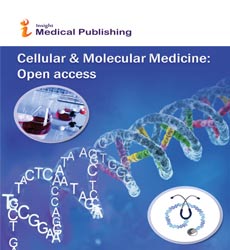Synthesis and Characterization of Cu2S-TiO2 Hetero structures with Enhanced Photo physical Properties
Mahmoud Abdelnaby
King Fahad University of Petroleum and Minerals, Saudi Arabia
Received Date: 2022-01-10 | Accepted Date: 2022-01-15 | Published Date: 2022-01-30Abstract
As environmental damage continues to increase with time, research must be conducted with environmental applications in mind. TiO2 has been extensively studied for photocatalysis due to its feasible synthesis as well as its chemical and thermal stability. A main drawback of TiO2 is its large bandgap, which leads to its poor photocatalytic activity in visible light. This can be overcome by using TiO2 in conjunction with low bandgap semiconductors. Recent studies proved that doping TiO2 with copper-based material has shown to display better photocatalytic activity in visible light than pure TiO21,2. In this study, we synthesized Cu2S@TiO2 nano-heterostructures of different copper ratios utilizing the sonochemical method. The composites were characterized using numerous techniques. The use of the Scanning Electron Microscope showed the preservation of the structural integrity of the TiO2. Powder X-Ray Diffraction and Raman Spectra confirmed the presence of both materials and their crystalline nature. UV-Vis proved the capability of Cu2S to enhance the light absorption of Cu2S@TiO2 towards the visible region with a decrease in the bandgap up to 3.1eV. Previous research has shown the application of TiO2 for water splitting and chemical degradation via photocatalysis3,4. Sulfur doped copper nanoparticles exhibited promising applications towards a selective reduction of CO2 to formate5,6. Thus, the newly developed Cu2S@TiO2 nanocomposite has great promise of application for water splitting and CO2 reduction. Consequently, helping the cause of decreasing environmental damage.
Open Access Journals
- Aquaculture & Veterinary Science
- Chemistry & Chemical Sciences
- Clinical Sciences
- Engineering
- General Science
- Genetics & Molecular Biology
- Health Care & Nursing
- Immunology & Microbiology
- Materials Science
- Mathematics & Physics
- Medical Sciences
- Neurology & Psychiatry
- Oncology & Cancer Science
- Pharmaceutical Sciences
